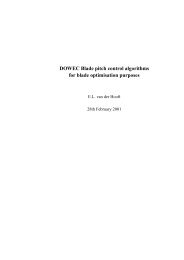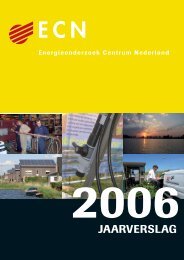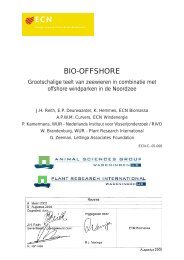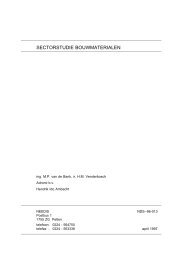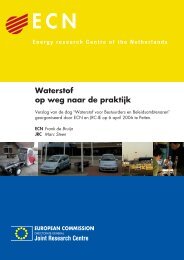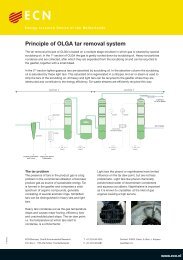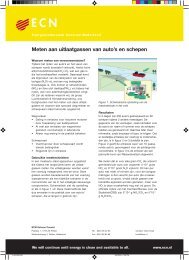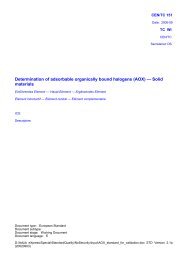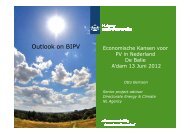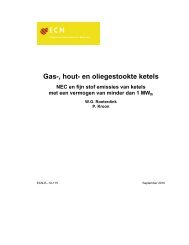PDF format (503 kB) - ECN
PDF format (503 kB) - ECN
PDF format (503 kB) - ECN
You also want an ePaper? Increase the reach of your titles
YUMPU automatically turns print PDFs into web optimized ePapers that Google loves.
[MT CO2 EQUIV./YEAR]<br />
1400<br />
1200<br />
1000<br />
800<br />
600<br />
400<br />
200<br />
0<br />
BC<br />
50 ECU/T 200 ECU/T<br />
20 ECU/T 100 ECU/T<br />
OTHER<br />
WASTE<br />
MANAGEMENT<br />
MATERIALS<br />
EFFICIENCY<br />
MATERIALS<br />
SUBSTITUTION<br />
OTHER RESOURCES<br />
SUBSTITUTION<br />
PETROCHEMICAL FEEDSTOCK<br />
SUBSTITUTION<br />
END-OF-PIPE<br />
Figure 9 Contribution of individual materials strategies, 2030, increasing emission penalties<br />
The impact of GHG emission reduction on individual materials use and production<br />
The changing materials consumption due to GHG emission reduction is shown in Figure 10. The figure shows<br />
the impact of a penalty of 200 ECU/t CO2. The consumption of cement decreases, while the consumption of<br />
wood and of aluminium increases. This change can be attributed to materials substitution in the transportation<br />
sector and materials substitution in the building sector.<br />
SHIFT [%]<br />
60<br />
40<br />
20<br />
0<br />
-20<br />
-40<br />
2000 2010 2020 2030 2040 2050<br />
[YEAR]<br />
CEMENT STEEL PE PAPER SAWN WOOD ALUMINIUM<br />
Figure 10 Shifts in materials consumption due to GHG emission reduction, 200 ECU/t<br />
CO2 reduction case<br />
The impact of GHG emission penalties on the materials production of aluminium, cement, and ethylene is<br />
shown in Figures 11-13. The figures show a significant switch of production technology and of production location<br />
(for aluminium, based on hydroelectricity based production in Iceland).



